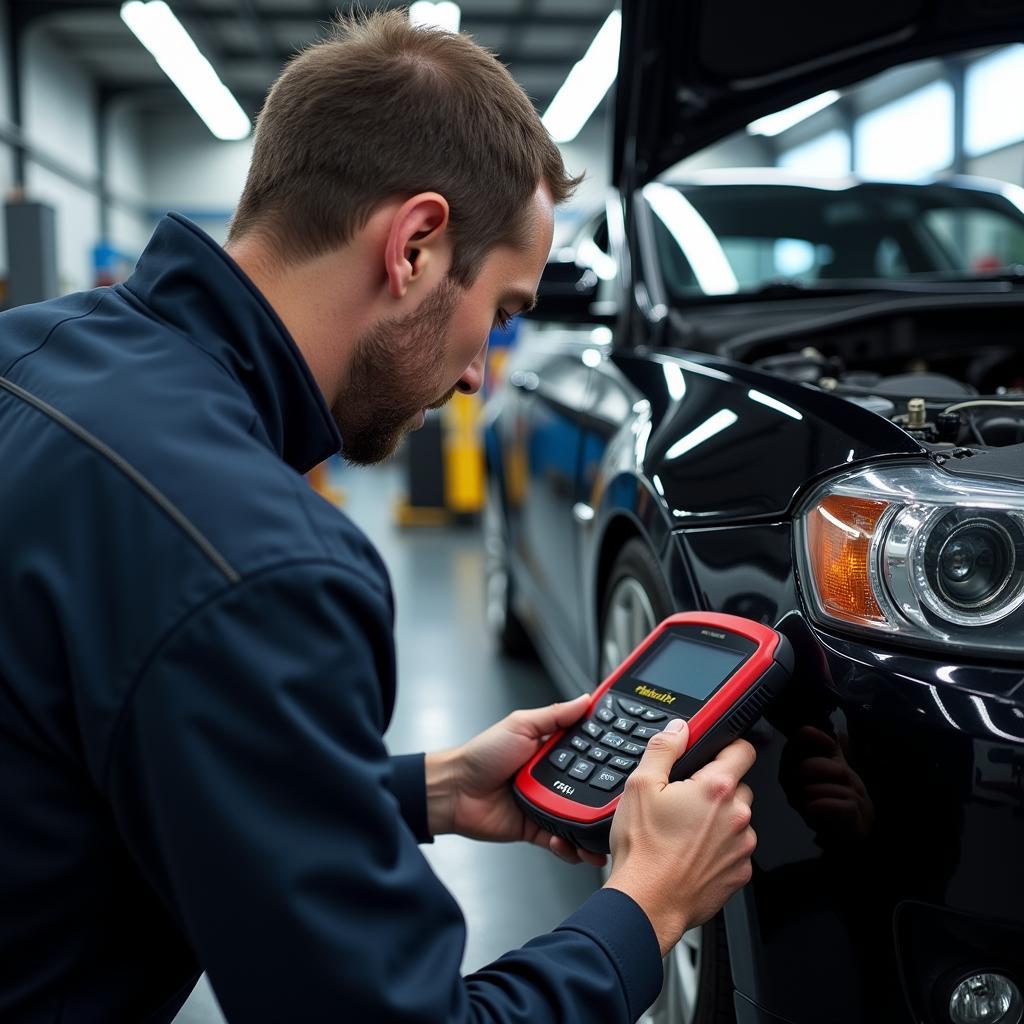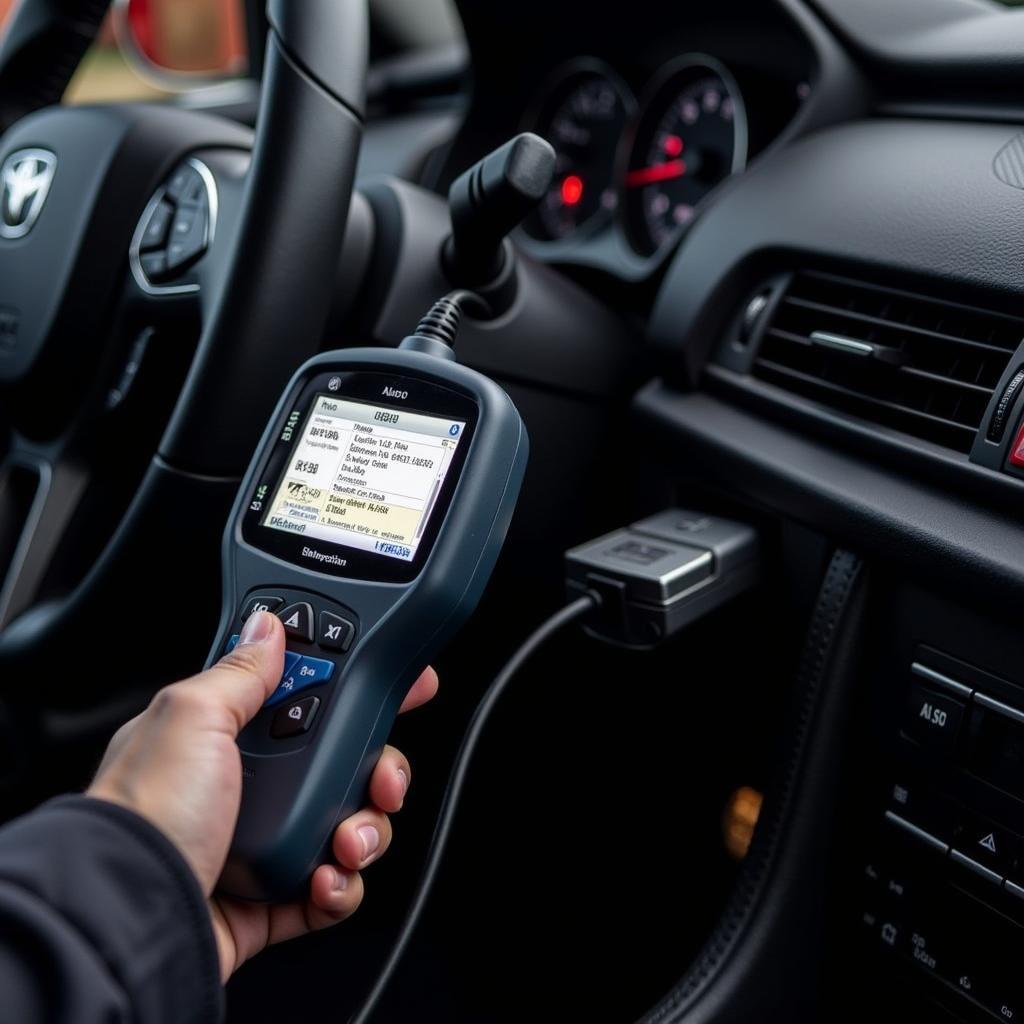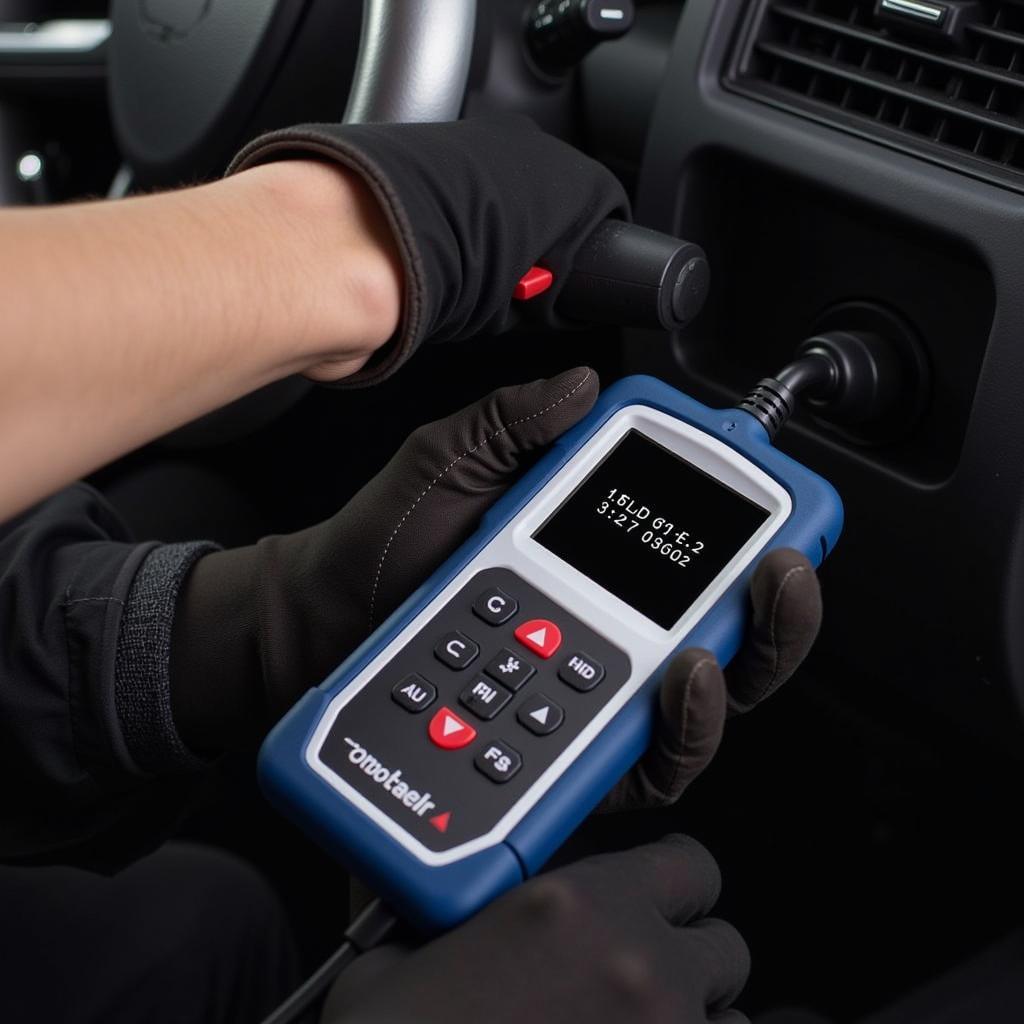Finding the right car diagnostic tool can feel like navigating a maze, especially with the overwhelming options available in the market. Whether you’re a seasoned mechanic or a car enthusiast looking to delve into DIY repairs, having the best professional car diagnostic tool can save you time, money, and unnecessary trips to the mechanic.
This comprehensive guide will equip you with the knowledge to choose a diagnostic tool that perfectly suits your needs and budget. We’ll cover everything from understanding the different types of tools to essential features and answer some frequently asked questions.
Understanding Your Diagnostic Needs
Before diving into the specifics of diagnostic tools, it’s crucial to determine your individual needs.
- Frequency of Use: Are you a DIYer who tinkers occasionally, or a professional mechanic working on multiple vehicles daily?
- Vehicle Compatibility: Do you work on a specific car make, or do you need a tool that covers a wide range of vehicles?
- Diagnostic Depth: Are you looking for basic code reading and clearing, or do you require advanced functionalities like live data streaming and module programming?
 Mechanic using a professional diagnostic tool
Mechanic using a professional diagnostic tool
Once you have a clear picture of your requirements, you can narrow down your choices and focus on tools that offer the features you need.
Types of Car Diagnostic Tools
Car diagnostic tools have evolved significantly, offering various functionalities and catering to different user levels. Here are the most common types:
1. Code Readers:
These entry-level tools are ideal for retrieving and clearing basic diagnostic trouble codes (DTCs). They are affordable and user-friendly, making them perfect for car owners who want to understand their vehicle’s warning lights. However, they provide limited information beyond basic code definitions.
2. OBD-II Scanners:
Building upon code readers, OBD-II scanners offer a wider range of data, including live sensor readings, freeze frame data, and emissions readiness status. They are suitable for DIYers and mechanics who need more in-depth diagnostic information.
3. Professional-Grade Scan Tools:
These high-end tools offer comprehensive functionalities, including advanced coding, programming, and bi-directional control over vehicle systems. They cater to professional mechanics and workshops dealing with complex repairs and diagnostics.
4. Manufacturer-Specific Tools:
These tools are designed for specific car makes, offering in-depth diagnostics and functionalities tailored to those vehicles. While they provide the most comprehensive coverage for a particular brand, they might not be as versatile for working on other makes.
Key Features to Consider
Choosing the right car diagnostic tool goes beyond simply selecting a type. Here are crucial features to consider:
1. Vehicle Coverage:
Ensure the tool supports the make, model, and year range of the vehicles you work on. Look for tools with wide compatibility or manufacturer-specific options if needed.
2. Functionality:
Consider the features essential for your needs. Do you require live data streaming, component activation, key programming, or ECU coding?
3. User Interface:
Opt for a tool with an intuitive interface, clear navigation, and easy-to-understand data presentation.
4. Software Updates:
As vehicle technology advances, regular software updates are crucial for compatibility with newer models and functionalities. Check for tools offering regular and affordable updates.
5. Durability and Build Quality:
Since diagnostic tools are frequently used in demanding environments, choose a tool built to withstand wear and tear.
The Best Professional Car Diagnostic Tool for 2019 and Beyond
In the ever-evolving landscape of automotive technology, staying ahead of the curve with a future-proof diagnostic tool is essential. While the “best” tool varies depending on individual needs, some key factors contribute to a tool’s longevity and value.
Look for tools that offer:
- Regular software and firmware updates: This ensures compatibility with newer vehicle models and evolving diagnostic protocols.
- Wireless connectivity: Bluetooth or Wi-Fi connectivity allows for seamless integration with laptops, smartphones, and tablets for enhanced data analysis and reporting.
- Cloud-based data storage and sharing: Securely store and access diagnostic data from any location, collaborate with colleagues, and leverage the power of cloud-based analytics.
- Advanced functionalities: Features like PassThru programming, J2534 compliance, and DoIP (Diagnostics over Internet Protocol) support future-proof your investment as vehicle technology advances.
Making the Investment
Investing in the best professional car diagnostic tool is a significant decision. By considering your specific needs, understanding the different types of tools, and prioritizing key features, you can confidently choose a tool that will serve you well for years to come. Remember, a good diagnostic tool is an investment that pays for itself in time saved, problems solved, and potentially costly repairs avoided.
For expert advice and to explore a range of high-quality car diagnostic tools, contact ScanToolUS at +1 (641) 206-8880 or visit our office at 1615 S Laramie Ave, Cicero, IL 60804, USA.
FAQs
1. Can I use a professional car diagnostic tool on my own car?
Yes, you can use a professional car diagnostic tool on your own car, but it might require some technical knowledge to interpret the data effectively.
2. Are there free car diagnostic tools available?
While some free or low-cost apps offer basic diagnostics, they often lack the depth and functionality of professional tools.
3. How often should I update my car diagnostic tool?
It’s recommended to update your tool as often as the manufacturer releases new software versions to ensure compatibility and access to the latest features.
4. What is the difference between OBD-II and EOBD?
OBD-II is the standard in North America, while EOBD is the European equivalent. Both serve similar functions but may have slight variations in protocols.
5. Can a car diagnostic tool fix my car?
Diagnostic tools primarily identify problems. They can sometimes be used to reset systems or perform basic calibrations, but they don’t physically repair components.


